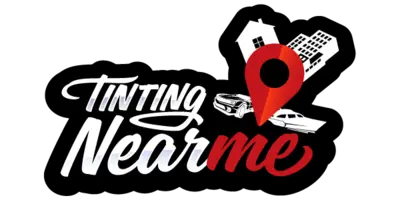2024 Idaho Legal Tint Laws Explained
Did you know that Idaho’s window tint laws have specific guidelines for different types of vehicles and windows? That’s right, it’s not just about how dark your tint is. The 2024 Idaho Legal Tint Laws dictate everything from the exact level of light your windows need to let in, to the reflectivity of your tint, and even require dual side mirrors if you’ve tinted your back window. But that’s not all – there are also penalties to consider for violations and certain exceptions for medical reasons. So, let’s get into the specifics and make sure you’re on the right side of the law.
The information on tintlaws.com isn’t legal advice; consider it a starting point. Always verify with local and state authorities, as the final decision rests with you. We are not lawyers. For specific legal guidance, we can refer you to legal experts. Remember, knowledge of both state and local laws is essential, and even law enforcement might not be fully updated. We aim for accuracy but advise double-checking for the latest regulations.
Key Takeaways
Key Takeaways
Key Takeaways
- Visible Light Transmission (VLT%) determines tint darkness in Idaho.
- Windshields must have non-reflective tint above the AS-1 line with VLT% over 70%.
- Front side windows must allow over 35% light transmission.
- Back side and rear windows require VLT% over 20%.
Understanding Idaho Tint Darkness Laws
To fully understand Idaho’s tint darkness laws, you need to grasp the concept of Visible Light Transmission (VLT%), which is the key factor in determining the darkness of the tint. VLT% gauges the percentage of light that a window tint film permits to pass through your car window. Idaho window tinting laws mandate this figure to ensure safety and visibility for drivers.
Now, you’re probably wondering, what exactly is the darkest legal tint in the state of Idaho? The answer to that question lies in the specific percentages set by the Idaho tint laws. For instance, the windshield of your vehicle must have a non-reflective tint above the AS-1 line. This essentially means that the topmost part of your windshield, typically marked by the manufacturer, should allow a VLT% of more than 70%.
Moving on to the front side windows, these must allow over 35% light in. The back side and rear windows follow a different rule, requiring a VLT% of over 20%. However, if you own a truck or a Multi-Purpose Vehicle (MPV), you’re exempt from this rule, offering you more flexibility when it comes to choosing your car window tint.
Reflectivity Rules for Idaho Tints
Diving into the reflectivity rules for Idaho tints, it’s crucial to note that your front and back side windows shouldn’t be more than 35% reflective if you’re driving a sedan or an SUV. The Idaho window tint law allows metallic elements in the tinting film to aid reflection, but the specific terms of the law limit your reflectivity to 35%.
This limit is set to ensure the safety of all road users, as high reflectivity can create blinding glare for other drivers, especially in strong sunlight. Remember, law enforcement takes these regulations seriously. Non-compliance could lead to penalties, so it’s essential to stick within the legal limits when tinting your windows.
Moreover, Idaho’s reflectivity rules are part of a broader set of tinting regulations in Idaho. For instance, if your back window is tinted, you must have dual side mirrors on your vehicle. Unlike some states, Idaho doesn’t ban specific tint colors and doesn’t require a sticker to identify legal tinting.
The specific terms of the law also differentiate between Passenger Vehicles’ front and back side windows. The Visible Light Transmission (VLT%) regulations for backside windows differ from those for front side windows, with specific darkness requirements for each set.
All these regulations fall under Idaho statutes Title 49 Motor Vehicles, Chapter 9 Vehicle Equipment – section 49-944. It’s a good idea to familiarize yourself with this information to ensure your vehicle’s window tinting adheres to Idaho’s reflectivity rules and overall tint law.
Other Crucial Idaho Tint Regulations
Beyond reflectivity, there are several other key Idaho tint laws that you should be aware of to ensure your vehicle complies fully with the state’s regulations. These laws cover everything from the amount of light that must be allowed through your front and back side windows, to the types of tint colors that are permissible.
In the state of Idaho, the law stipulates that your front side windows must allow more than 35% of light to pass through. This is crucial to ensure visibility and safety. For your back side windows, the law is slightly different. These windows must allow more than 20% light transmission, with certain exemptions for Multi-Purpose Vehicles (MPVs).
While identifying legal tinting, you’ll find that the laws allow for tinting films that contain metallic elements to increase reflection. However, be cautious here, the reflectivity of your front and back side windows should not exceed 35%.
Furthermore, regarding the color of your tint, Idaho is quite lenient. There are no specific bans on tint colors. However, if your back windows are tinted, the state law requires you to have dual side mirrors for safety reasons.
Front Side Windows | Back Side Windows |
Must allow more than 35% light transmission | Must allow more than 20% light transmission |
Reflectivity should not exceed 35% | Reflectivity should not exceed 35% |
For 2024 Idaho legal tint laws explained further, you should consult your state’s official website or a legal expert. This will help you to understand other crucial Idaho tint regulations and ensure your vehicle is fully compliant.
Penalties for Idaho Tint Violations
While ensuring your vehicle’s tint complies with Idaho’s regulations is crucial, it’s equally important to be aware of the penalties for Idaho tint violations. Violating the 2024 Idaho legal tint laws may result in citations and fines, adversely affecting your driving record. Furthermore, law enforcement may require you to remove or correct the tint to comply with the rules and regulations.
The details about the specific penalties are not explicitly stated in the law, but typically, first-time offenders might have to pay a fine. Repeat violations could lead to increased fines and the possibility of a mandatory vehicle inspection. This inspection is to ensure that your vehicle’s tint meets the Visible Light Transmission (VLT) percentage allowed by the state.
The VLT percentage refers to the percent of visible light that can pass through your windows. If your windows are excessively tinted beyond the legal limit, it may impact your vehicle’s safety and your insurance coverage. The state requires a sticker to identify legal factory tint, ensuring it meets the legal VLT percentage.
There are, however, medical exemptions for special tint cases. Consideration is given to those with medical conditions that require less exposure to sunlight. But remember, these exemptions for special tint are not a free pass to disregard the tint laws. Always ensure your vehicle’s tint is within the stipulated guidelines.
Medical and Other Tint Exceptions
In Idaho, you’ll find specific exceptions and allowances in the state’s tint laws, particularly for medical conditions and multi-purpose vehicles (MPVs). Understanding the exact details, though, can be tricky. These ‘medical and other tint exceptions’ can be a lifesaver for those with certain health conditions but need to be applied for correctly to avoid legal issues.
To help you navigate the 2024 Idaho legal tint laws, here are some key aspects to be aware of:
- No specific colors of tint are banned in Idaho, providing more options when choosing the film they sell.
- Medical exemptions allow for darker window tints. However, the state doesn’t require a sticker to certify the film.
- In terms of the exemption for MPVs, the law allows any light transmission on the back side and rear windows.
- The tint is allowed on the top of the windshield, but only down to the manufacturer’s AS-1 line.
- Despite these allowances, the law still states windows must allow over 35% of light in, with the exception of the rear window.
To avoid potential confusion or legal mishaps, it’s crucial that you consult the state law for medical exemptions and MPV allowances. Unfortunately, resources like the Idaho DMV, DOT, and State Police might not provide clear explanations. So, equip yourself with the right information to ensure the tinting on your vehicle is within the legal parameters.

How to Get Medical Exemption For Window Tint in Idaho
Discover MyEyeRx.net, a company that streamlines the process of obtaining a medical exemption for window tint online. Explore their services to easily transform your window tint from non-compliant to legally approved!
Because of the differences in each of the 50 states, we’ve crafted distinct guides for securing window tint medical exemptions across all 50 states.

Toriano (Tory) Dewberry
Become one of the many satisfied clients Toriano has assisted in obtaining a medical exemption without stepping out of their homes. Click the button below to begin and discover if you're eligible for a medical exemption.

Toriano (Tory) Dewberry
Become one of the many satisfied clients Toriano has assisted in obtaining a medical exemption without stepping out of their homes. Click the button below to begin and discover if you're eligible for a medical exemption.
Frequently Asked Questions (FAQ'S)
What Is the Darkest Legal Tint in Idaho?
In Idaho, you’re allowed to have a tint with a Visible Light Transmission of 35% for front side windows. For multi-purpose vehicles, the back side windows can go darker with a 20% VLT. Keep in mind, the tint installation process, durability, pricing, and local regulations. Overly dark tints can pose visibility factors and road safety issues. Also, you may face enforcement challenges and legal implications if your tint doesn’t comply with Idaho’s tint laws.
How Dark Is 35 Window Tint?
When you’re eyeing a 35% window tint, it’s not as dark as night but it definitely dims the day. This tint level allows 35% of light to penetrate through, reducing the glare and UV exposure. The darkness depends on the tint material type and installation process. It’s key to maintain it well for longevity and aesthetic impact. Don’t forget, tint removal techniques differ and cost varies, so consider these factors too.
What Is the Darkest Tint Allowed?
In Idaho, you’re allowed a 35% tint on your front side windows. This level of tinting is a balance between privacy considerations and safety concerns. Proper tint installation ensures durability and aesthetic appeal. The darker tint also provides benefits like temperature control and UV protection. However, remember that excessive darkness can create visibility issues. If you need to change, tint removal is possible. Always make sure your tinting adheres to local laws.
What State Has the Loosest Tint Laws?
When it comes to tinted windows safety, laws vary widely from state to state. It’s not a one-size-fits-all situation. Some states are more lax, others stricter. Tint regulation variations can impact driving, visibility versus privacy, and even have legal implications. State-specific exceptions, vehicle inspection requirements, and tinting material legality also come into play. It’s crucial to stay on top of tint law enforcement in your area to avoid any surprises.

Tint Laws Team
Ensuring your tint is not just about style, but legality and safety.
Let us guide you through the maze of state regulations to legal clarity.

Conclusion
So, there you have it – Idaho’s 2024 tint laws, decoded and distilled. Remember, front side windows need to let in over 35% light, a fact that surprises many. Don’t get caught out, stay in the clear and save yourself a potential fine. Always double-check the rules for your vehicle type and remember, if your back window’s tinted, you’ll need those dual side mirrors. It’s all about safety and visibility on Idaho’s roads.
Looking to find a Reputable Window Tint Company In Idaho?
Checkout Tintingnearme.com to Find A Local Tint Shop
After learning about window tint laws, the next step is to find a trusted local window tinting shop. Our directory at Tinting Near Me offers a selection of reputable shops knowledgeable in both quality tinting and legal standards, including medical exemptions.
Choose a shop from our list for expert service that meets legal requirements and enhances your vehicle’s compliance and protection.



